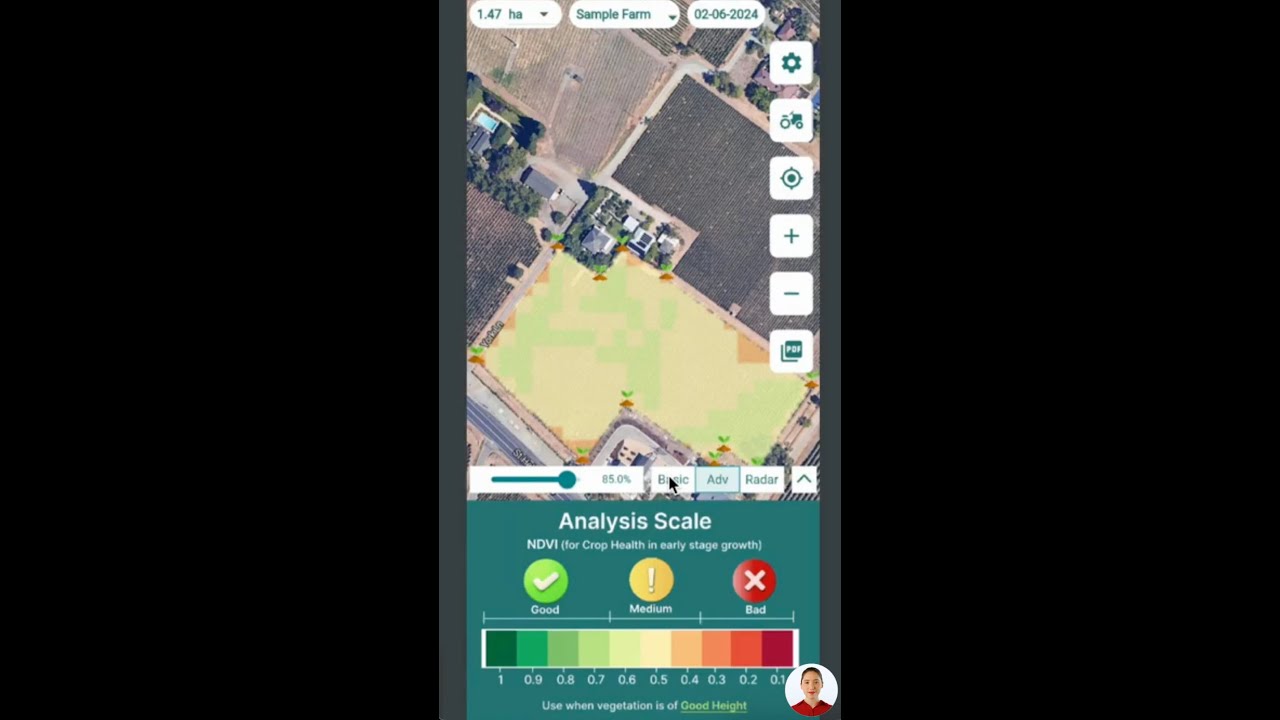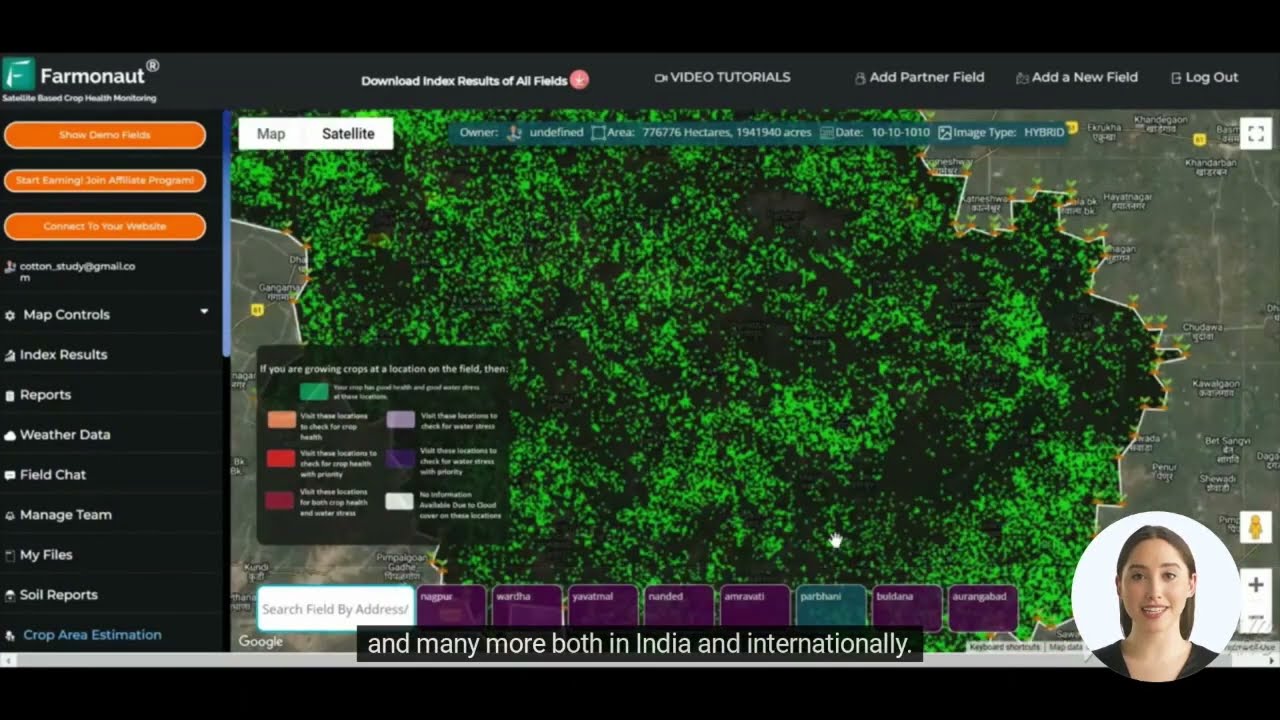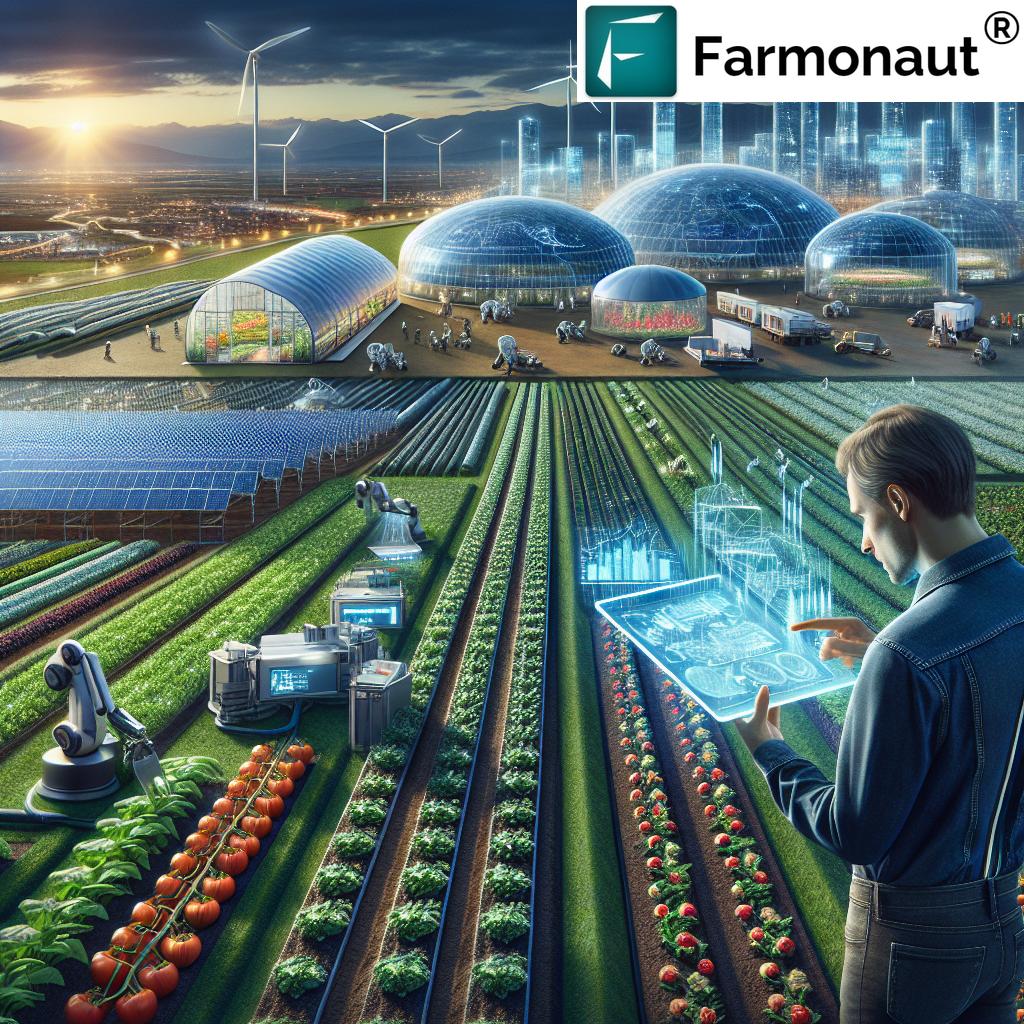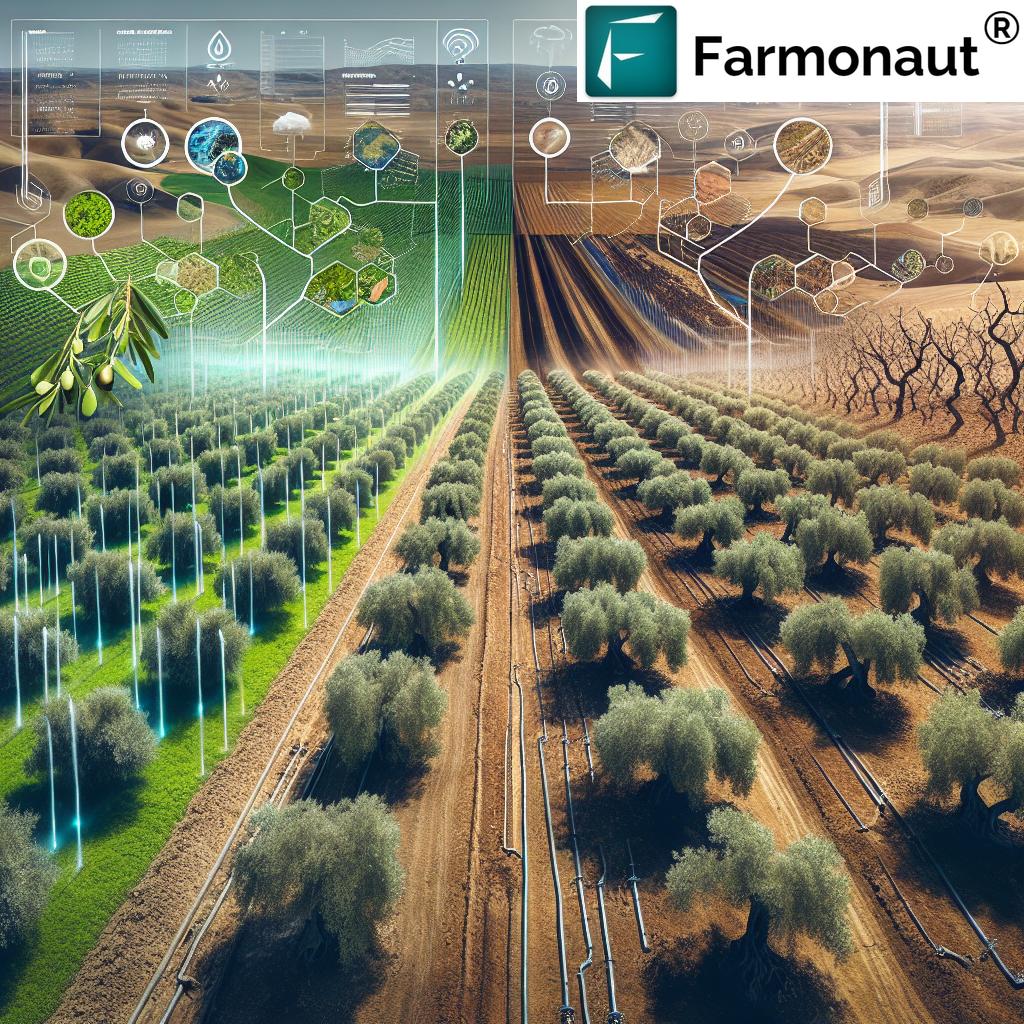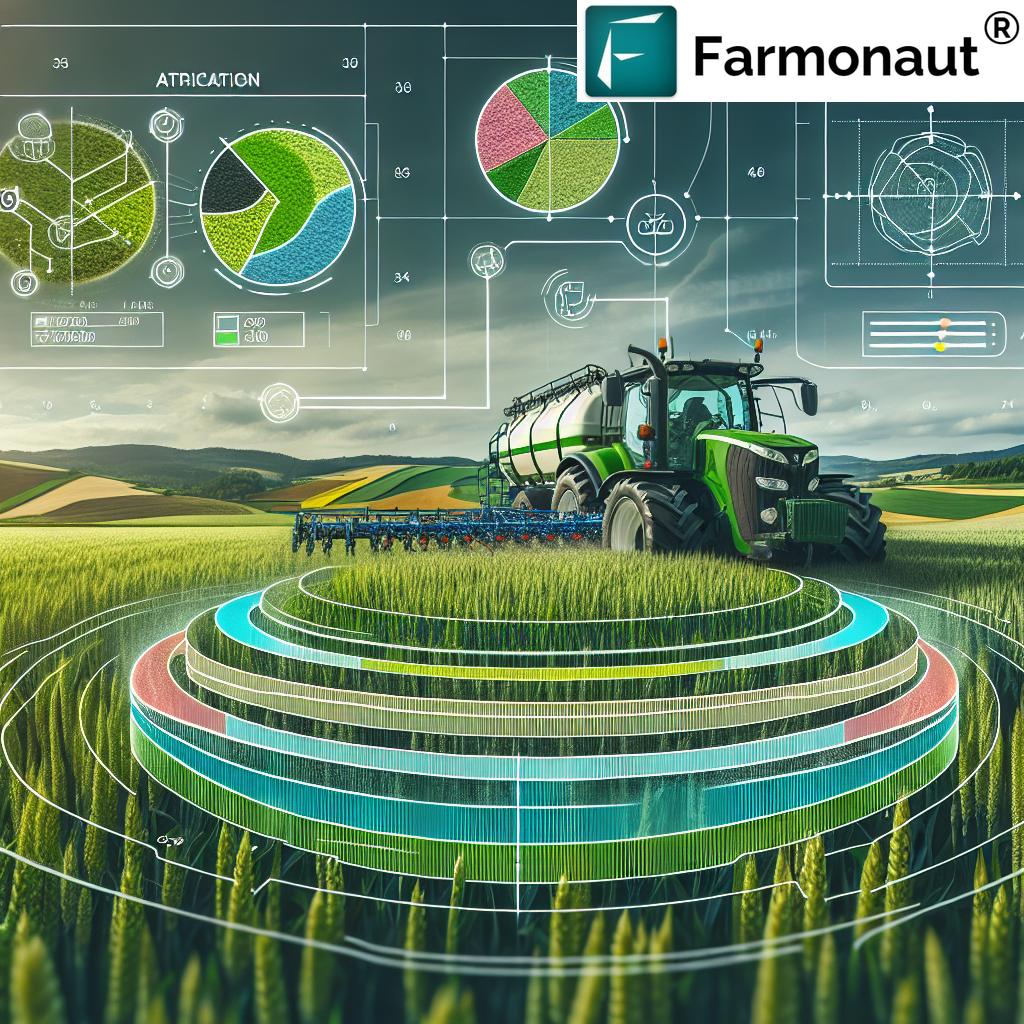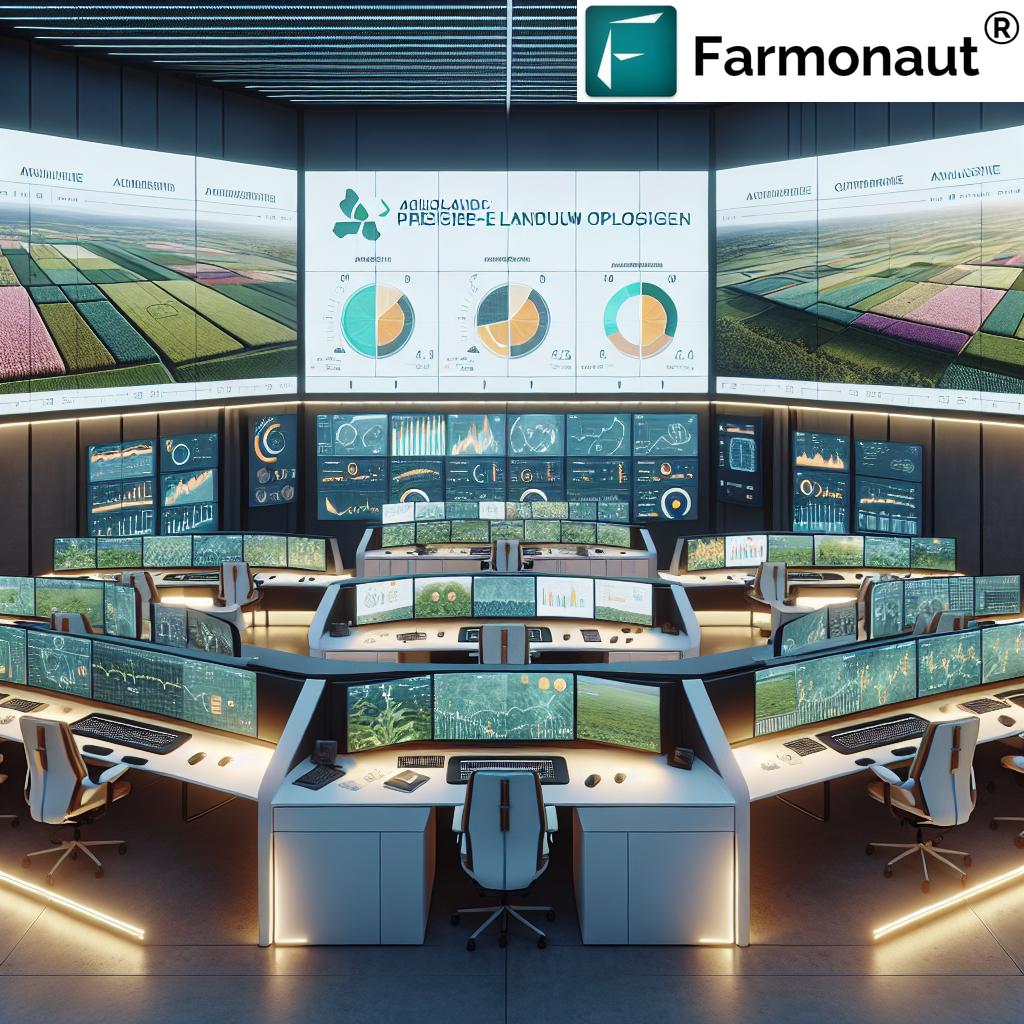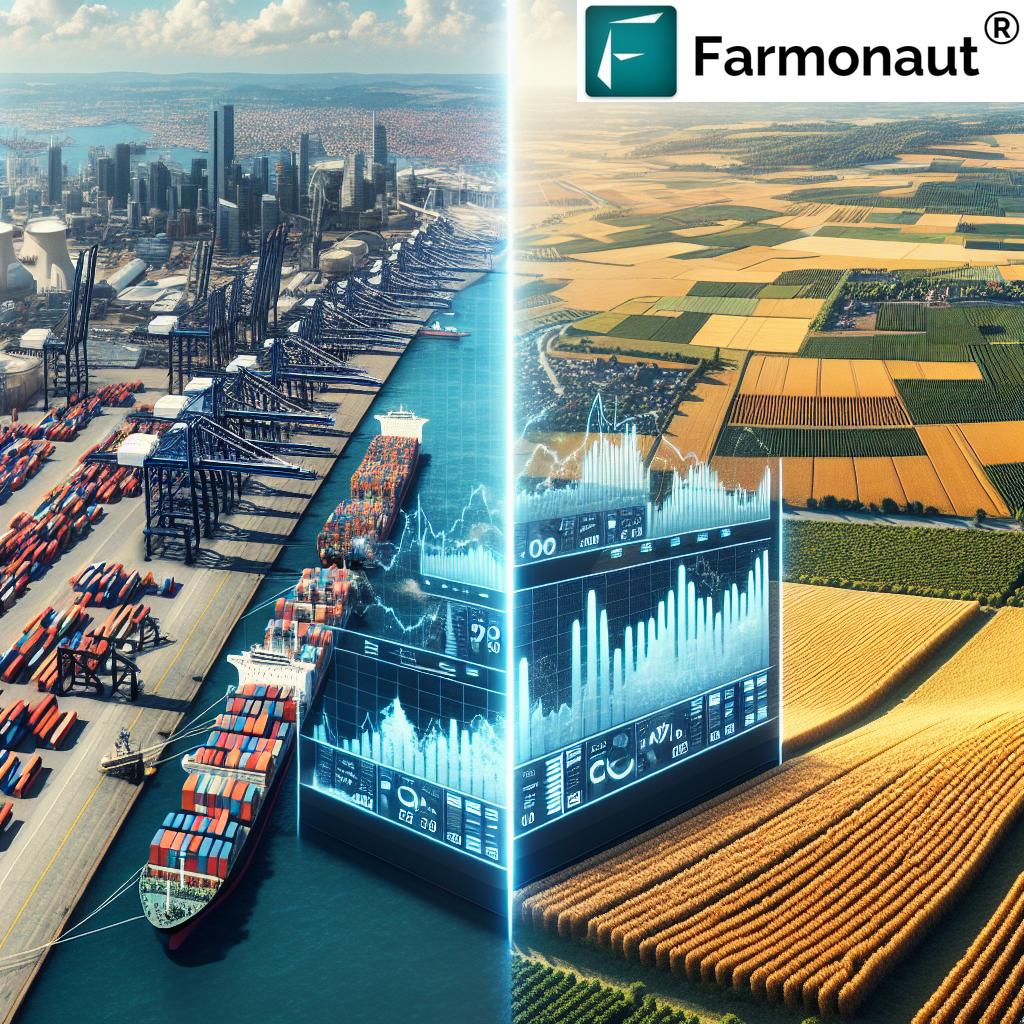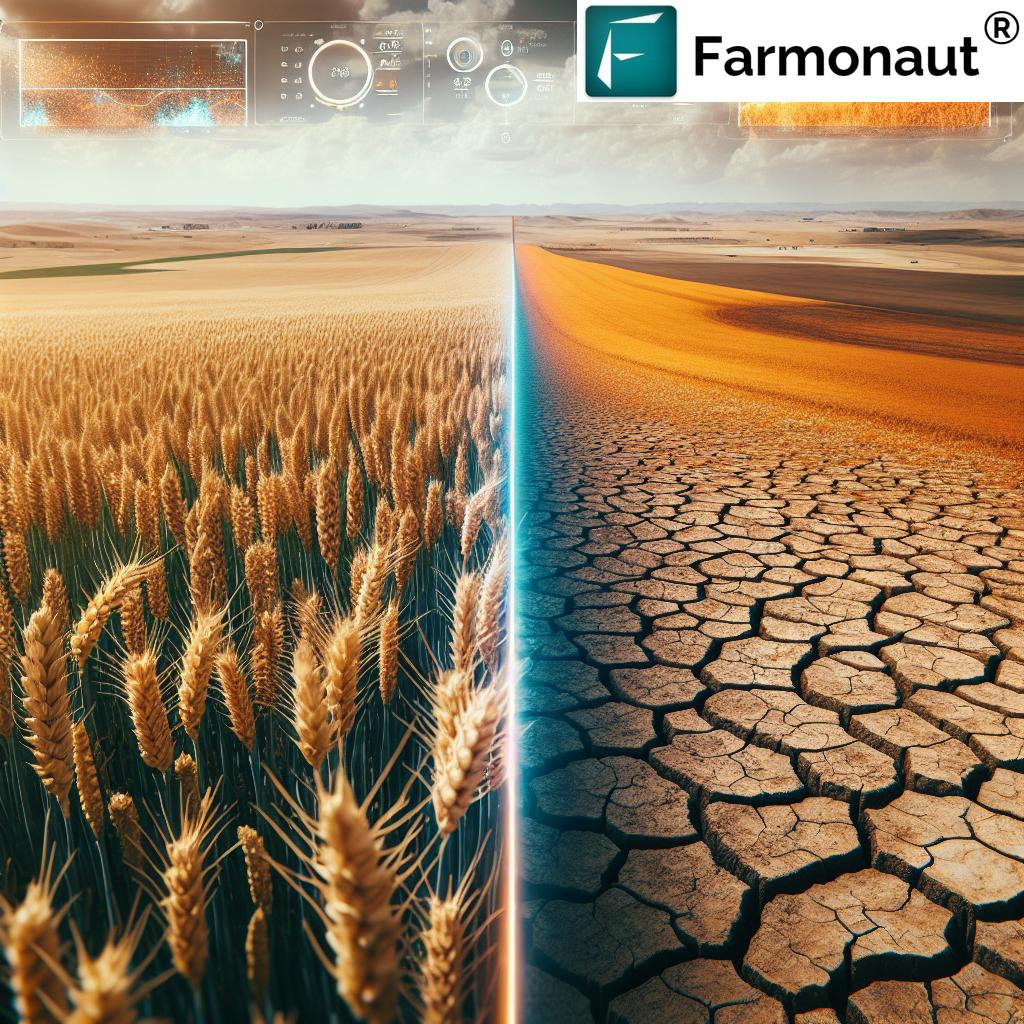Revolutionizing Potato and Barley Farming: How Variable Rate Technology Boosts Yields and Optimizes Resources in Czechia
“Variable rate technology in potato planting can adjust seeding rates across different yield potential zones, optimizing resource use.”
In the ever-evolving landscape of agriculture, we’re witnessing a remarkable transformation in how farmers approach crop cultivation. At the forefront of this revolution is variable rate technology in agriculture, a game-changer that’s reshaping the way we think about precision farming techniques. In this comprehensive exploration, we’ll delve into the fascinating world of smart farming, focusing on recent field trials conducted in Czechia that showcase the power of this innovative approach in potato and barley farming.
As we navigate through the intricacies of variable rate technology, we’ll uncover how it’s not just boosting yields but also optimizing resources, leading to more sustainable and profitable farming practices. From the use of prescription maps to the integration of satellite imagery in farming, we’re about to embark on a journey that reveals the future of agriculture – one where data-driven decision-making reigns supreme.
Understanding Variable Rate Technology in Agriculture
Variable rate technology (VRT) is at the heart of precision agriculture, offering farmers a sophisticated way to manage their fields with unprecedented accuracy. This technology allows for the precise application of inputs such as seeds, fertilizers, and water based on the specific needs of different areas within a field. By leveraging data from various sources, including satellite imagery, soil samples, and historical yield data, VRT enables farmers to create detailed prescription maps that guide their farming operations.
The core principle behind VRT is simple yet revolutionary: treat each part of the field according to its unique characteristics and potential. This approach stands in stark contrast to traditional farming methods that apply inputs uniformly across entire fields, regardless of variations in soil quality, moisture levels, or other factors that influence crop growth.
Key Components of Variable Rate Technology
- GPS Guidance Systems: Precise positioning for accurate application of inputs
- Prescription Maps: Detailed field maps showing different management zones
- Variable Rate Controllers: Equipment that adjusts input rates based on prescription maps
- Sensors: Devices that collect real-time data on soil conditions, crop health, and other factors
- Data Management Software: Tools for analyzing and interpreting field data to inform decision-making
By integrating these components, farmers can make informed decisions about every aspect of their operations, from seeding to harvesting. This level of precision not only increases yields but also reduces waste, minimizes environmental impact, and ultimately improves profitability.
The Power of Prescription Maps in Precision Farming
Prescription maps are the backbone of variable rate technology, serving as detailed guides for farmers to optimize their field operations. These maps are created by analyzing various data points, including:
- Soil fertility levels
- Topography
- Historical yield data
- Satellite imagery
- Weather patterns
By synthesizing this information, prescription maps divide fields into different management zones, each with its own set of recommendations for input application. This granular approach allows farmers to tailor their strategies to the specific needs of each zone, maximizing efficiency and yield potential.
For example, in areas with higher yield potential, a prescription map might recommend higher seeding rates or increased fertilizer application. Conversely, in zones with lower potential, the map could suggest reduced inputs to avoid waste and minimize costs.
Creating Effective Prescription Maps
- Data Collection: Gather historical yield data, soil samples, and satellite imagery
- Analysis: Use advanced algorithms to interpret the collected data
- Zone Delineation: Divide the field into distinct management zones based on potential
- Recommendation Generation: Develop specific input recommendations for each zone
- Map Creation: Produce a visual representation of the zones and recommendations
- Implementation: Upload the map to variable rate equipment for execution
The beauty of prescription maps lies in their ability to evolve. As new data is collected each season, these maps can be refined and updated, continually improving the accuracy and effectiveness of variable rate applications.
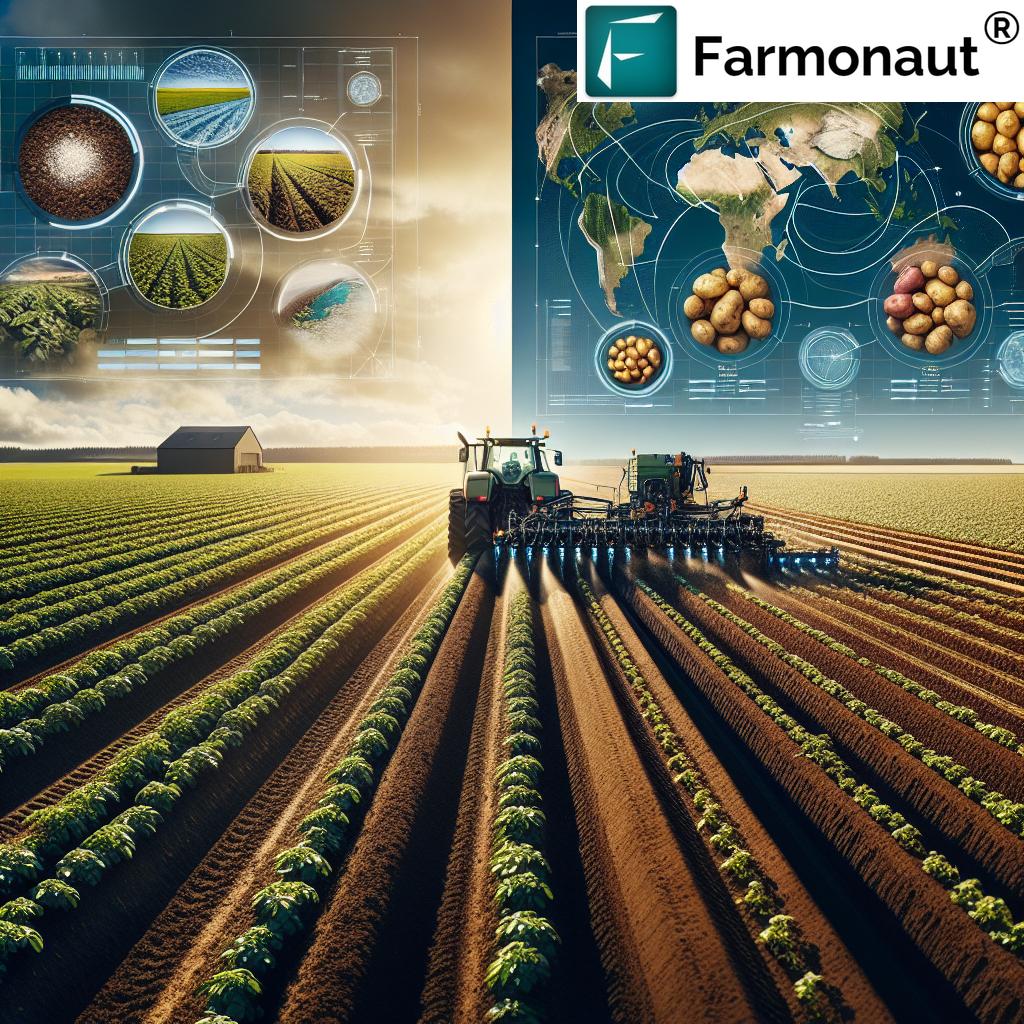
Revolutionizing Potato Farming with Variable Rate Technology
Potato farming has long been a staple of agriculture in Czechia, but recent field trials have shown that variable rate technology can take this traditional crop to new heights of productivity and efficiency. By optimizing potato planting distance and adjusting inputs based on yield potential zones, farmers are seeing remarkable improvements in both yield and quality.
Variable Rate Seeding in Potato Cultivation
One of the most significant applications of VRT in potato farming is in the seeding process. Traditional methods often use a uniform seeding rate across entire fields, which can lead to overcrowding in some areas and underutilization in others. Variable rate seeding addresses this issue by adjusting the planting density based on the specific conditions of each field zone.
- High Potential Zones: Increased planting density to maximize yield
- Low Potential Zones: Reduced planting density to conserve resources
- Optimal Spacing: Tailored to soil conditions, water availability, and nutrient levels
By optimizing potato planting distance, farmers can ensure that each plant has the best possible conditions for growth, leading to more uniform tuber size and higher overall yields.
Variable Rate Fertilizer Application in Potato Fields
Fertilizer management is another area where VRT is making a significant impact in potato farming. Instead of applying fertilizers uniformly, variable rate fertilizer application allows for precise nutrient delivery based on the specific needs of different field areas.
- Nitrogen Management: Adjust nitrogen levels to promote optimal growth without excess
- Phosphorus and Potassium: Tailor application rates to soil test results and crop requirements
- Micronutrients: Apply trace elements only where needed, reducing overall input costs
This targeted approach not only improves potato yield and quality but also minimizes the environmental impact of excess fertilizer runoff.
Results from Potato Field Trials in Czechia
Recent field trials conducted in Czechia have demonstrated the remarkable potential of variable rate technology in potato farming. Here are some key findings:
- Yield Increases: Up to 15% higher yields compared to traditional methods
- Input Cost Reduction: 10-20% decrease in seed and fertilizer costs
- Quality Improvements: More uniform tuber size and better overall crop quality
- Water Efficiency: 15% reduction in water usage through optimized irrigation
These results highlight the transformative power of precision agriculture in potato cultivation, offering a glimpse into the future of sustainable and profitable farming practices.
Transforming Barley Farming with Precision Agriculture
“Precision agriculture techniques using satellite imagery and prescription maps can significantly boost crop yields and reduce input costs.”
While potato farming has seen remarkable advancements through VRT, barley cultivation is not far behind. The application of variable seeding rates for barley has opened up new possibilities for farmers looking to optimize their cereal crop production. Let’s explore how precision agriculture is revolutionizing barley farming in Czechia.
Variable Rate Seeding in Barley Fields
Barley, like many cereal crops, benefits greatly from tailored seeding rates. Variable rate technology allows farmers to adjust their seeding density based on factors such as:
- Soil fertility
- Moisture availability
- Historical yield data
- Topography
By varying the seeding rate across different zones of the field, farmers can optimize plant populations for maximum yield potential. This approach ensures that resources are used efficiently, with higher seeding rates in areas of high potential and lower rates in less productive zones.
Precision Fertilizer Application for Barley
Nutrient management is crucial for barley production, and variable rate technology offers unprecedented control over fertilizer application. Using prescription maps based on soil tests and crop requirements, farmers can apply fertilizers with pinpoint accuracy:
- Nitrogen: Adjust rates to promote optimal growth and protein content
- Phosphorus: Target applications to support root development and early growth
- Potassium: Tailor applications to enhance disease resistance and straw strength
This precise approach not only improves yield and quality but also reduces the environmental impact of excess fertilizer use.
Integrating Satellite Imagery in Barley Farming
Satellite imagery plays a crucial role in modern precision agriculture, providing farmers with valuable insights into crop health and field conditions. For barley farming, satellite data can be used to:
- Monitor crop growth stages
- Detect early signs of stress or disease
- Assess soil moisture levels
- Guide in-season management decisions
By leveraging this technology, farmers can make timely interventions to address issues before they impact yield, ensuring optimal crop performance throughout the growing season.
Results from Barley Field Trials
Field trials conducted on barley farms in Czechia have shown promising results from the implementation of variable rate technology:
- Yield Increases: Average yield improvements of 8-12%
- Input Efficiency: 15% reduction in seed and fertilizer usage
- Quality Enhancements: More uniform grain size and improved protein content
- Sustainability: Reduced environmental impact through optimized input use
These findings demonstrate the significant potential of precision agriculture in enhancing barley production, offering farmers a path to increased profitability and sustainability.
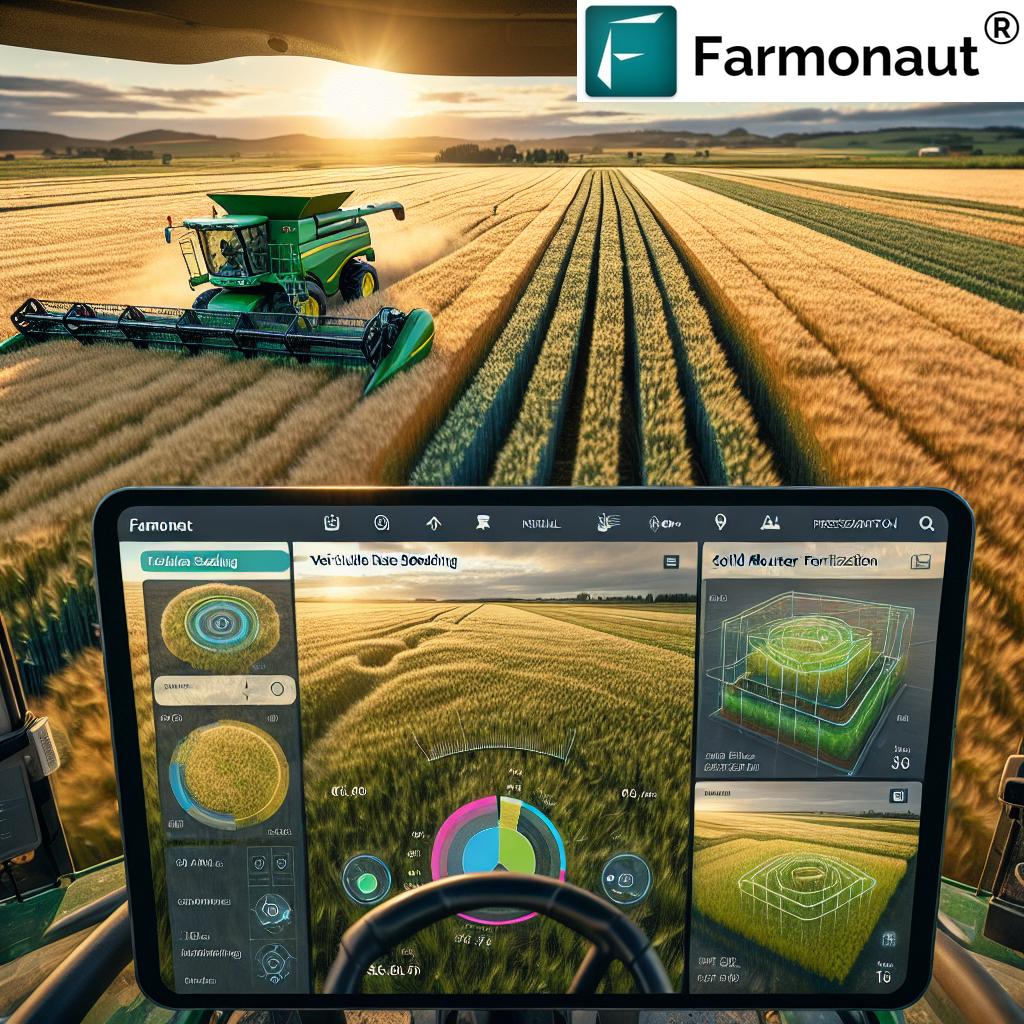
Comparative Analysis: Variable Rate Technology in Potato and Barley Farming
To better understand the impact of variable rate technology on both potato and barley farming, let’s examine a comparative analysis of its effects on these two important crops:
| Aspect | Potato Farming | Barley Farming |
|---|---|---|
| Seeding/Planting Rate Optimization | Adjust planting distance based on soil fertility and moisture | Vary seeding rates according to yield potential zones |
| Yield Potential Zones | Highly variable, requiring precise management | More uniform, but still benefit from zone-specific strategies |
| Resource Management Improvements | Significant water and fertilizer savings | Moderate reductions in seed and fertilizer use |
| Estimated Yield Increase (%) | 10-15% | 8-12% |
| Input Cost Reduction (%) | 15-20% | 10-15% |
| Sustainability Benefits | Reduced water usage, minimized fertilizer runoff | Lower carbon footprint, improved soil health |
This comparison highlights the versatility of variable rate technology in addressing the unique needs of different crops. While both potato and barley farming benefit significantly from VRT, the specific applications and outcomes vary based on the crop’s characteristics and growing requirements.
The Role of Data-Driven Decision Making in Modern Farming
At the heart of variable rate technology and precision agriculture lies the power of data-driven decision making. By collecting, analyzing, and acting upon vast amounts of field data, farmers can make more informed choices about every aspect of their operations. This approach represents a significant shift from traditional farming methods that relied heavily on intuition and historical practices.
Key Data Sources in Precision Agriculture
- Satellite Imagery: Provides broad-scale information on crop health and field conditions
- Soil Sensors: Offer real-time data on soil moisture, temperature, and nutrient levels
- Weather Stations: Supply localized climate data for more accurate forecasting
- Yield Monitors: Collect detailed information on crop performance during harvest
- Drone Surveys: Provide high-resolution imagery for detailed field analysis
By integrating these data sources, farmers can create a comprehensive picture of their fields, allowing for highly targeted management strategies.
Benefits of Data-Driven Farming
- Improved Accuracy: Precise application of inputs based on actual field conditions
- Risk Reduction: Better forecasting and early problem detection
- Cost Savings: Optimized use of resources, reducing waste and overuse
- Environmental Stewardship: Minimized environmental impact through efficient farming practices
- Increased Profitability: Higher yields and lower input costs lead to improved margins
As technology continues to advance, the potential for data-driven agriculture to transform farming practices is virtually limitless. From AI-powered crop management systems to blockchain-based supply chain tracking, the future of farming is increasingly digital and data-centric.
Challenges and Considerations in Implementing Variable Rate Technology
While the benefits of variable rate technology are clear, implementing these systems comes with its own set of challenges. Farmers considering the adoption of VRT should be aware of the following considerations:
- Initial Investment: The cost of equipment and software can be significant
- Technical Expertise: Proper use of VRT requires training and ongoing education
- Data Management: Handling large volumes of data can be complex and time-consuming
- Technology Integration: Ensuring compatibility between different systems and equipment
- Calibration and Maintenance: Regular adjustments are necessary for optimal performance
Despite these challenges, many farmers find that the long-term benefits of VRT far outweigh the initial hurdles. As technology becomes more accessible and user-friendly, we expect to see wider adoption across the agricultural sector.
The Future of Precision Agriculture: Trends and Innovations
As we look to the future, several emerging trends and innovations are set to further revolutionize precision agriculture:
- Artificial Intelligence and Machine Learning: Advanced algorithms for even more precise decision-making
- Internet of Things (IoT) in Agriculture: Interconnected sensors and devices for real-time monitoring
- Robotics and Automation: Autonomous machinery for planting, maintenance, and harvesting
- Gene Editing: Tailored crop varieties optimized for specific growing conditions
- Blockchain in Agriculture: Enhanced traceability and transparency in the food supply chain
These advancements promise to make farming more efficient, sustainable, and productive than ever before, addressing the challenges of feeding a growing global population while minimizing environmental impact.
Conclusion: Embracing the Precision Agriculture Revolution
The field trials conducted in Czechia on potato and barley farming have demonstrated the transformative power of variable rate technology in agriculture. By leveraging precision farming techniques, farmers can optimize their operations, boost yields, and reduce input costs while promoting sustainable practices.
As we’ve seen, the integration of satellite imagery, prescription maps, and data-driven decision-making is revolutionizing the way we approach crop management. From optimizing potato planting distance to implementing variable seeding rates for barley, these technologies offer unprecedented control and efficiency in farming operations.
The future of agriculture lies in embracing these innovations and continuing to push the boundaries of what’s possible in crop production. By doing so, we can create a more resilient, productive, and sustainable agricultural system capable of meeting the challenges of the 21st century and beyond.
For farmers looking to take the first step into precision agriculture, platforms like Farmonaut offer accessible solutions for implementing satellite-based crop monitoring and management. With tools for real-time crop health assessment, weather forecasting, and resource optimization, Farmonaut empowers farmers to harness the power of data-driven agriculture for their fields.
As we conclude this exploration of variable rate technology in potato and barley farming, it’s clear that the agricultural revolution is well underway. By embracing these innovative approaches, farmers can not only improve their yields and profitability but also contribute to a more sustainable and resilient food system for generations to come.
FAQ: Variable Rate Technology in Agriculture
Q: What is variable rate technology in agriculture?
A: Variable rate technology (VRT) is a precision farming technique that allows farmers to adjust the rate of crop inputs (such as seeds, fertilizers, and pesticides) based on the specific needs of different areas within a field. It uses data from various sources, including satellite imagery and soil tests, to create prescription maps that guide the application of inputs.
Q: How does variable rate technology improve crop yields?
A: VRT improves yields by optimizing the use of inputs across the field. By applying more resources to high-potential areas and reducing inputs in low-potential zones, it ensures that each part of the field receives exactly what it needs for optimal growth, leading to more uniform and higher overall yields.
Q: What equipment is needed to implement variable rate technology?
A: Implementing VRT typically requires GPS-guided machinery, variable rate controllers, prescription mapping software, and sometimes additional sensors or monitoring devices. Many modern tractors and implements can be adapted for variable rate applications with the right software and control systems.
Q: Is variable rate technology cost-effective for small farms?
A: While the initial investment in VRT can be significant, many smaller farms find it cost-effective in the long run due to reduced input costs and improved yields. Some farmers start with simpler forms of VRT, such as variable rate fertilization, and gradually expand their use of the technology as they see benefits.
Q: How does satellite imagery contribute to variable rate farming?
A: Satellite imagery provides valuable data on crop health, soil moisture, and field variability. This information is used to create detailed prescription maps that guide variable rate applications. Satellite data can also help monitor crop progress throughout the growing season, allowing for timely adjustments to management strategies.
Q: Can variable rate technology be used for all types of crops?
A: Yes, VRT can be adapted for use with a wide variety of crops, including grains, vegetables, and fruits. However, the specific applications and benefits may vary depending on the crop type and growing conditions.
Q: How does variable rate technology contribute to sustainable farming practices?
A: VRT promotes sustainability by optimizing the use of resources, reducing waste, and minimizing environmental impact. By applying inputs only where and when they’re needed, it helps reduce excess fertilizer runoff, conserve water, and lower the overall carbon footprint of farming operations.
Q: What are the main challenges in adopting variable rate technology?
A: The main challenges include the initial cost of equipment and software, the need for technical expertise to operate and maintain the systems, and the complexity of data management. Additionally, integrating VRT with existing farm practices and equipment can sometimes be challenging.
Q: How accurate are prescription maps used in variable rate applications?
A: The accuracy of prescription maps has improved significantly with advances in satellite technology, GPS systems, and data analysis techniques. However, their accuracy can be influenced by factors such as the quality of input data, the resolution of satellite imagery, and the sophistication of the mapping software used.
Q: Can variable rate technology be used for irrigation management?
A: Yes, variable rate irrigation is an important application of VRT. It allows farmers to adjust water application rates based on soil moisture levels, crop needs, and field topography, leading to more efficient water use and improved crop performance.
For more information on how to implement variable rate technology and other precision agriculture techniques in your farming operations, visit Farmonaut. Our platform offers comprehensive solutions for satellite-based crop monitoring, weather forecasting, and precision agriculture management, helping farmers optimize their operations and boost productivity.
For developers interested in integrating Farmonaut’s powerful satellite and weather data into their own applications, check out our API and API Developer Docs.


